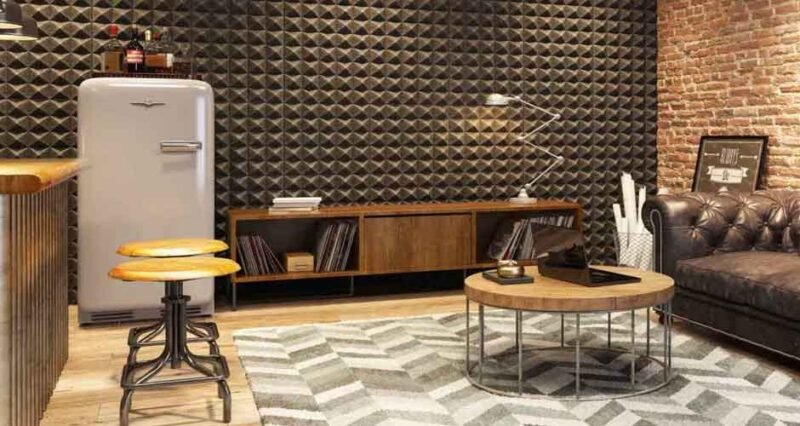
In the noisy world we live in, more and more people are looking for peace and quiet. Whether it’s for creating a serene home environment, setting up a professional studio, or ensuring privacy in office spaces, soundproofing has become an essential part of modern living. This comprehensive guide will delve into the art and science of soundproofing a space, offering practical advice and innovative solutions to help you get the peace and quiet you desire.
A Little About Soundproofing Basics
Before diving into the nuts and bolts of soundproofing, it’s crucial to understand the basics. Soundproofing is the process of reducing sound pressure in a given space. There are two primary types of sound to consider. These are airborne—like human speech and music—and impact noise like footsteps or vibrations from machinery. Effective soundproofing involves addressing both.
The key to successful soundproofing lies in four fundamental principles: adding mass, damping sound vibrations, creating an air gap, and decoupling structures. Adding mass to walls, floors, and ceilings can significantly reduce the transmission of sound. Damping involves using materials that dissipate sound energy as heat, thus reducing its intensity. An air gap, or increasing the distance between the sound source and the receptor, can also be an effective method. Lastly, decoupling structures prevents sound waves from easily transferring between building elements. Understanding these principles is the first step towards gaining a quieter space.
The Power of Soundproof Curtains
The use of soundproof curtains is an ingenious and aesthetically pleasing way to minimize noise intrusion in a space. To understand how soundproof curtains work, it’s important to know that they are designed with heavy, dense materials that absorb sound waves, thus diminishing the amount of noise that passes through them. These curtains are particularly effective against high-frequency sounds like chatter and traffic noise. They are also layered, often with a mass-loaded vinyl (MLV) core, which contributes to their sound dampening properties.
Additionally, soundproof curtains are not just functional; they come in various styles and colors, allowing them to blend seamlessly with your interior décor. They can be easily installed on windows, in doorways, or even used as partition curtains in larger rooms. Their versatility and effectiveness make them a popular choice for those seeking a balance of functionality and style in soundproofing solutions.
The Role of Acoustic Panels in Soundproofing
Acoustic panels play a vital role in enhancing the sound quality within a room while contributing to soundproofing. These panels are designed to absorb sound waves, particularly the mid to high-frequency ranges, reducing echo and reverberation. This absorption not only prevents sound from bouncing within the room but also diminishes the amount of sound that escapes. Acoustic panels come in various materials, such as foam or mineral wool, and can be aesthetically pleasing, often doubling as decorative elements. They are typically easy to install and can be strategically placed on walls or ceilings to optimize sound absorption and improve the overall acoustic environment.
Exploring the Efficiency of Soundproofing Insulation
Soundproofing insulation is a critical component in the quest for a quieter space, especially when it comes to minimizing airborne noises such as conversations or traffic sounds. This type of insulation involves materials that are specifically designed to absorb sound and prevent its transmission through walls, ceilings, and floors. Materials like mineral wool, fiberglass, and specially designed foam insulation are common choices due to their high density and sound-absorbing properties.
These materials work by trapping sound waves and dampening their ability to travel through building structures. Soundproofing insulation is particularly effective when installed during the construction phase of a building, but it can also be retrofitted into existing spaces. The key is to ensure that the insulation is densely packed and properly sealed to maximize its soundproofing efficiency.
Sealing Gaps and Cracks for Enhanced Soundproofing
One often overlooked aspect of soundproofing is the importance of sealing gaps and cracks. Even the smallest openings can significantly undermine soundproofing efforts by allowing noise to penetrate or escape a space. To combat this, it’s essential to identify and seal these gaps, particularly around doors, windows, and where walls meet floors and ceilings.
Materials like acoustic sealants, weatherstripping, and door sweeps are effective in closing these gaps. Acoustic sealants are specially formulated to block sound and can be used to fill cracks in walls or gaps around window frames. Weatherstripping and door sweeps, on the other hand, are ideal for sealing gaps around movable elements like doors and windows. Properly sealing a space can make a noticeable difference in its overall soundproofing effectiveness.

